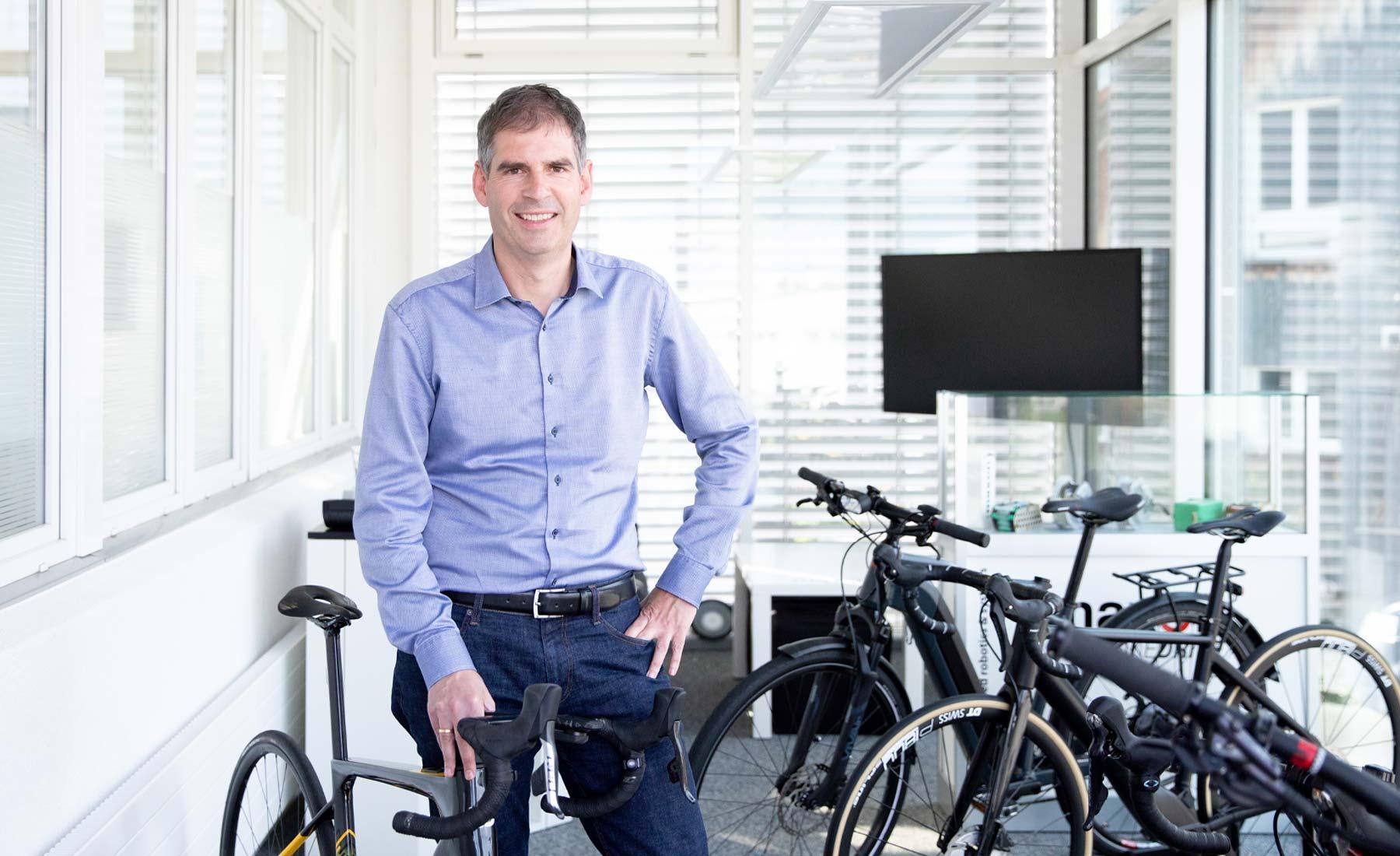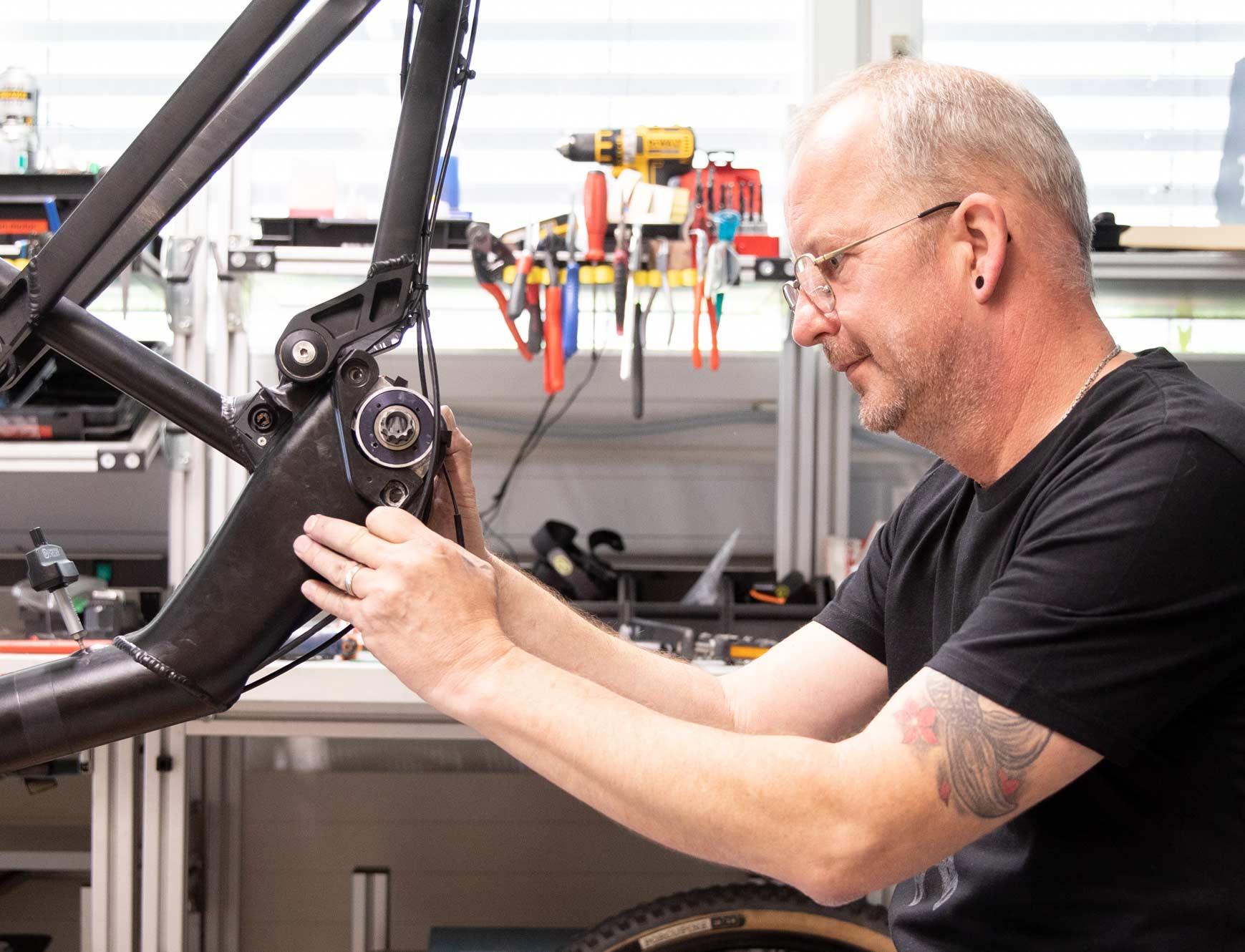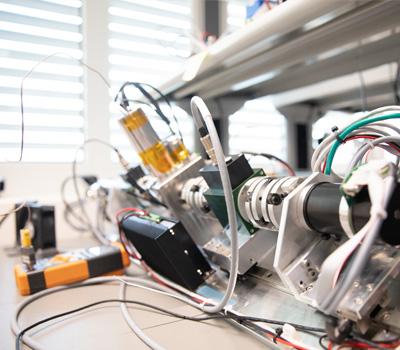Cycling with a permanent tailwind
Details
How the BIKEDRIVE AIR from maxon extends the range for sporty cyclists
With the BIKEDRIVE AIR drive, maxon is pursuing the philosophy of making the e-bike as indistinguishable as possible from a classic bike in terms of riding experience and look.
You can hear their audible whir on roads and mountain routes. The e-bike remains the driver of the bicycle sector. The global market for micromobility has been growing steadily for years as people seek out accessible and energy-efficient mobility options.
A means of transport or a piece of sports equipment?
Two primary development trajectories have now emerged for e-bikes. On the one hand we have the bicycle purely as an electrical means of transport from A to B: pedelecs (up to 25 km/h) or speed pedelecs (up to 45 km/h) with a hub motor and high dynamics are enjoying runaway demand. Bulky batteries, powerful motors, and added extras like lighting or massive displays with navigation and other features can quickly increase the weight of one of these electric bikes to 25 kg or more.
«When the motor is off, the e-bike rides like a regular bicycle, with no resistance at all.»
Thomas Steger, Product Manager E-Bike at maxon
On the other hand we have the light e-bike gaining significant ground for street or trail use. Sporty cyclists are thus making the switch from pure muscle strength to moderate support, while still enjoying a physical challenge. Mid-mounted motors have the edge in this segment because of their clear superiority over hub motors in terms of handling. Increasingly the focus is on looks, particularly when it comes to elegant, high-end models: for the most part, motors and batteries are integrated out of sight in the frame. The bike designer thus largely has total design freedom. As current examples from the manufacturers Cipollini and Transalpes show, the BIKEDRIVE AIR makes it possible to build an electric racing bike with a total weight of less than 11 kg and a full-suspension e-mountain bike weighing less than 16.5 kg.

Balanced riding experience
Thanks to the centered weight distribution and the low center of gravity, a mid-mounted motor in an e-bike gives a balanced riding experience that comes very close to that of a regular bike. The road e-bike loses very little agility through the addition of a motor, while the light e-mountain bike’s low center of gravity suits it perfectly too: the front wheel remains on the ground even on steep climbing sections.
The BIKEDRIVE AIR from maxon helps significantly with reducing the difference compared to a regular “natural bike” to an absolute minimum. Thomas Steger, Product Manager E-Bike at maxon, explains: “Barely visible from the outside, our 220 watt drive acts directly on the pedals. When the motor is off, the e-bike rides like a regular bicycle, with no resistance at all.”
«There are some signs that the drive-less 'natural bike' might end up being a niche product.»
Stefan Müller, Head of Business Unit Mobility Solutions at maxon
Riders choose between the three support levels “Cruise”, “Push”, and “Blast”, and an app turns a smartphone into a control center. In this way, riders can individually customize the levels and access all other important data.
Another reason for the mid-mounted motor’s popularity as an e-bike motor is its low power consumption and direct power transmission. The list of cons is short, and, for all intents and purposes, is limited to increased strain on the chain, chain ring, and pinion.
Organic support
Where are future developments headed? It is already clear that an ever more sensitive response from the drive system’s sensors and increasingly individual software customization are happening. Stefan Müller, Head of Business Unit Mobility Solutions at maxon, explains: “In the future we’ll also be able to integrate the gearshift into the riding algorithm, which will allow even more sensitive support tailored to any riding situation.”
Will the drive-less “natural bike” end up being a niche product? Stefan Müller: “Some signs are pointing this way. The super-powerful pedelecs, but particularly also the light e-bikes, have further expanded their respective market shares, while the sales figures for non-electrified bikes are in decline.”


